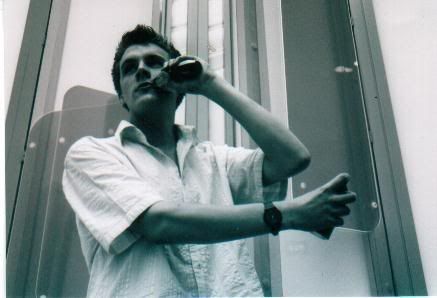From Hostel to Pavello
Barcelona:
From Hostel to Pavilion-
From Hostel to Pavilion-
Travelling from the "lovely" hehehe Seapoint Hostel. Well it wasn't that bad really, apart from you could see most people sleeping and it took on the form of an army barracks. We set off to the Oympic Park of 1992 via the cable cart at the marina, where it ended at Placa de Carlos Ibanez at the base of Parc De Montjuic. Then we hiked up Montjuic, which means Mount of the Jews to the castle at the top. From there we went on a wild goose chase looking for a cemetry, but got lost and ended up walking through a load of bamboo and other greenery. Then eventually we found it and it was right by a main road! The cemetry itself has graves stacked upon eachother with flowers in most of the glass display windows showing who rests within. The place is so large that it has it's very own bus route and bus stops and is a pretty amazing place to see.
From there we walked to the Olympic Park, which covers a large area. The centre piece is the Estadi Olimpic de Monjuic. Now home to Espanyol Football Club it was increased to 70,000 for the olympics. Other buildings present include Arata Isozaki's Palau Sant Jordi and Ricard Bofill's swimming pools.
Near the Olympic Stadium is the main part of Montjuic, where the National Art Museum of Catalonia sits above the Cascade Fountains. The area was used for the 1929 International Exhibition. Part of this exhibition included Pavello Mies Van der Rohe, which architects seem to adore. It was dismantled soon after the exhibtion, but had recently been reconstructed in the 1980s.
Made from steel, glass, stone and onyx it uses very clean lines and plays with where the building ends and begins. Reflective shallow pools are important in the design and help create a serene and peaceful environment. The stone or onyx used for the walls is very tactile and provides the viewer interest to what is a pretty minimalistic building, built in the Bauhaus style.


0 Comments:
Post a Comment
<< Home